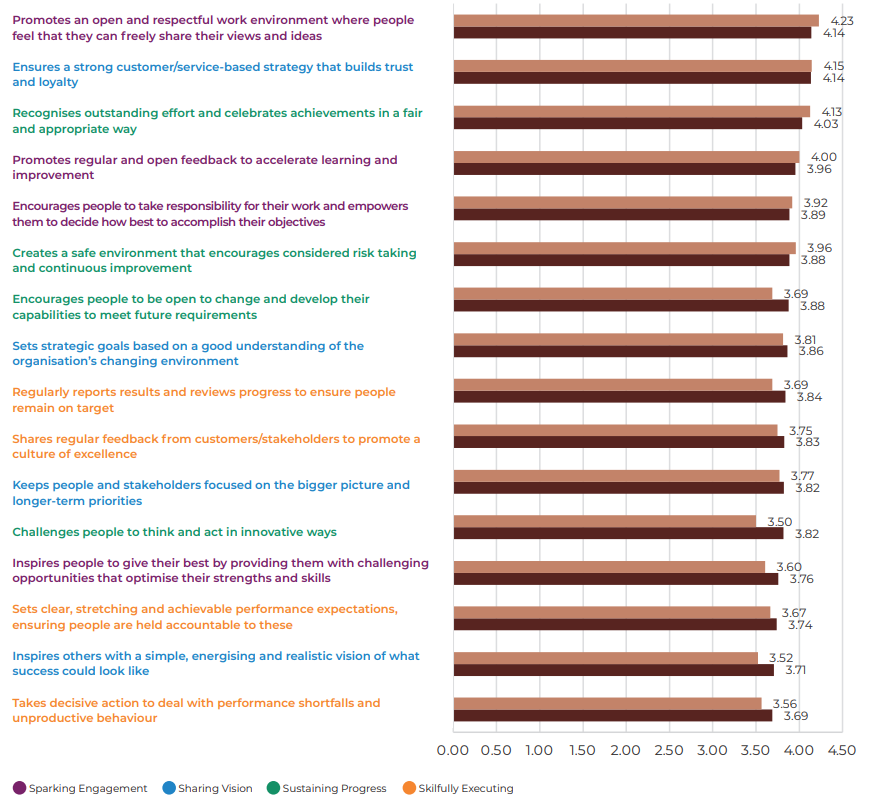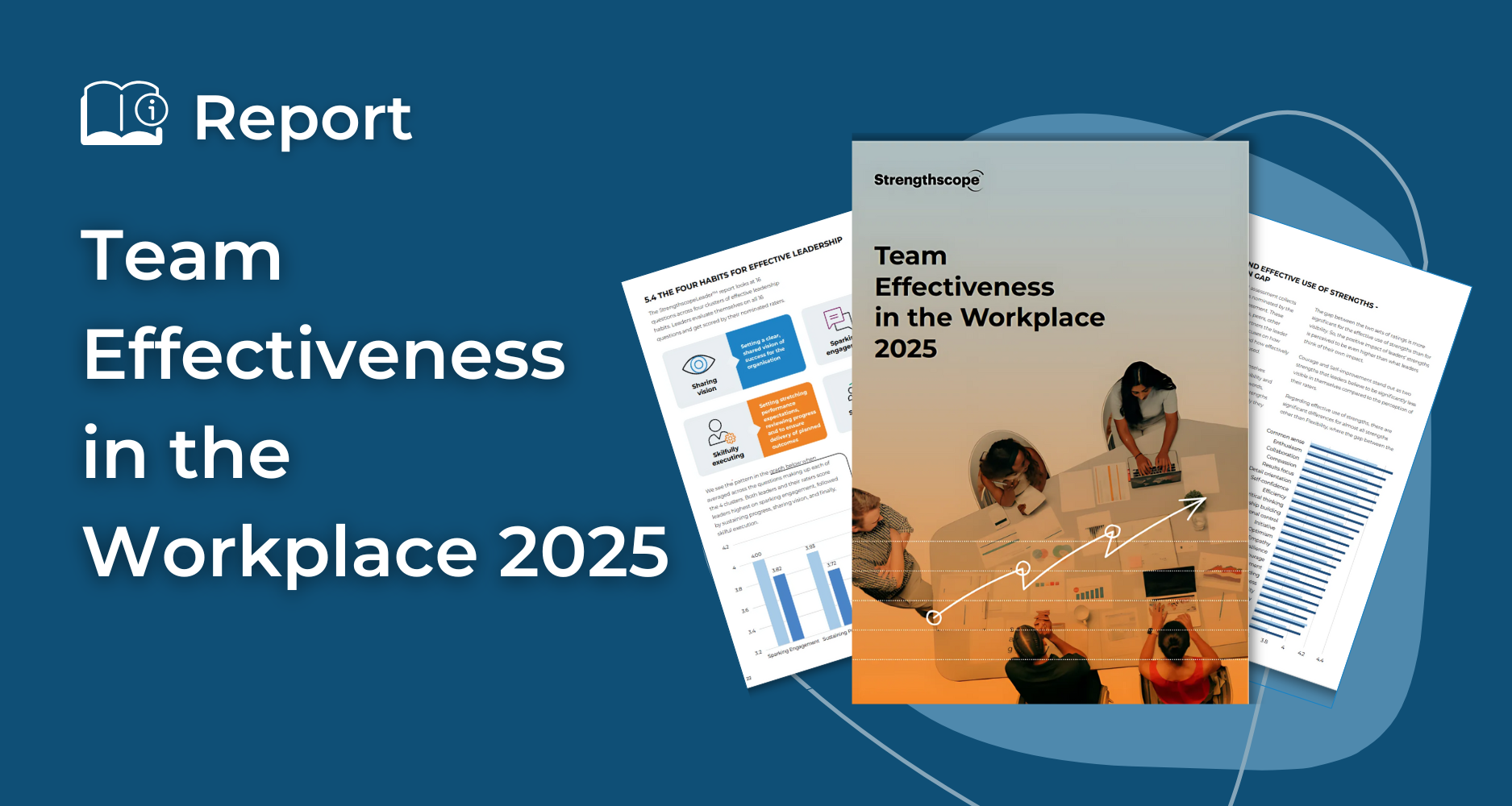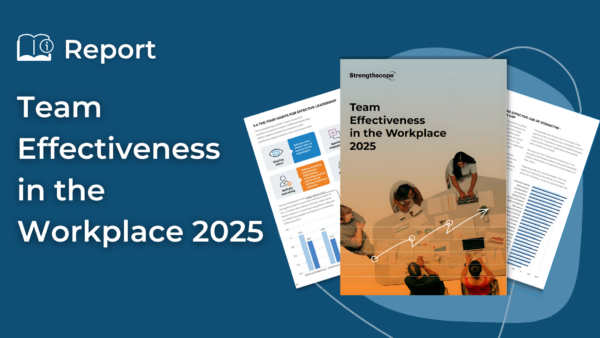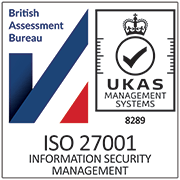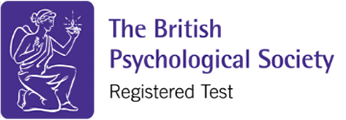Our Team Effectiveness in the Workplace 2025 data is derived from two unique datasets collected by Strengthscope between October 2023 and September 2024. These datasets are specifically taken from the responses to the scientifically tested and reliable StrengthscopeLeader™ and StrengthscopeTeam™ assessments.
This article is a breakdown specifically of the data for the sales industry. Want to see the full data? Download the report here.
1. The Strengths Ranking of Sales Leaders
Strengths are qualities that energise us and that we are great at, or have the potential to become great at. This ranking demonstrates the most common strengths of leaders in the construction industry.
Based on this data, it’s clear that leaders in sales gain energy from building networks of contacts, winning agreement and support for a position or desired outcome, and influencing and motivating others in the organisation to contribute to the success of their teams and organisation.
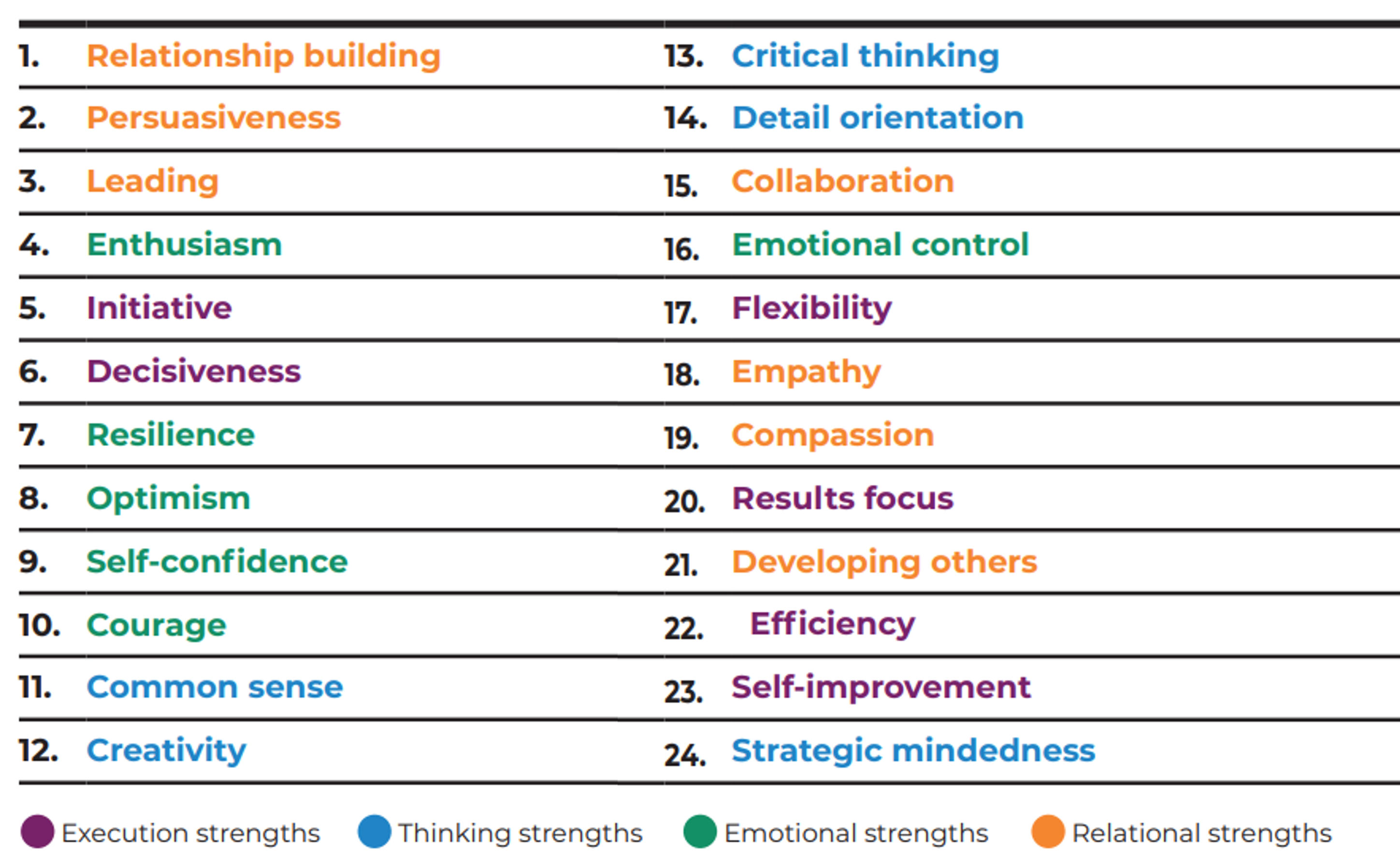
2. The Visibility and Effectiveness of Strengths for Leaders in the Sales Industry
In the graphs below, we see where leaders rate themselves in the visibility and effective use of their strengths, versus where their stakeholders rate these leaders against the same criteria.
Overall, the leaders’ stakeholders rate the leaders’ visibility and effective use of strengths higher than the leaders rate themselves.
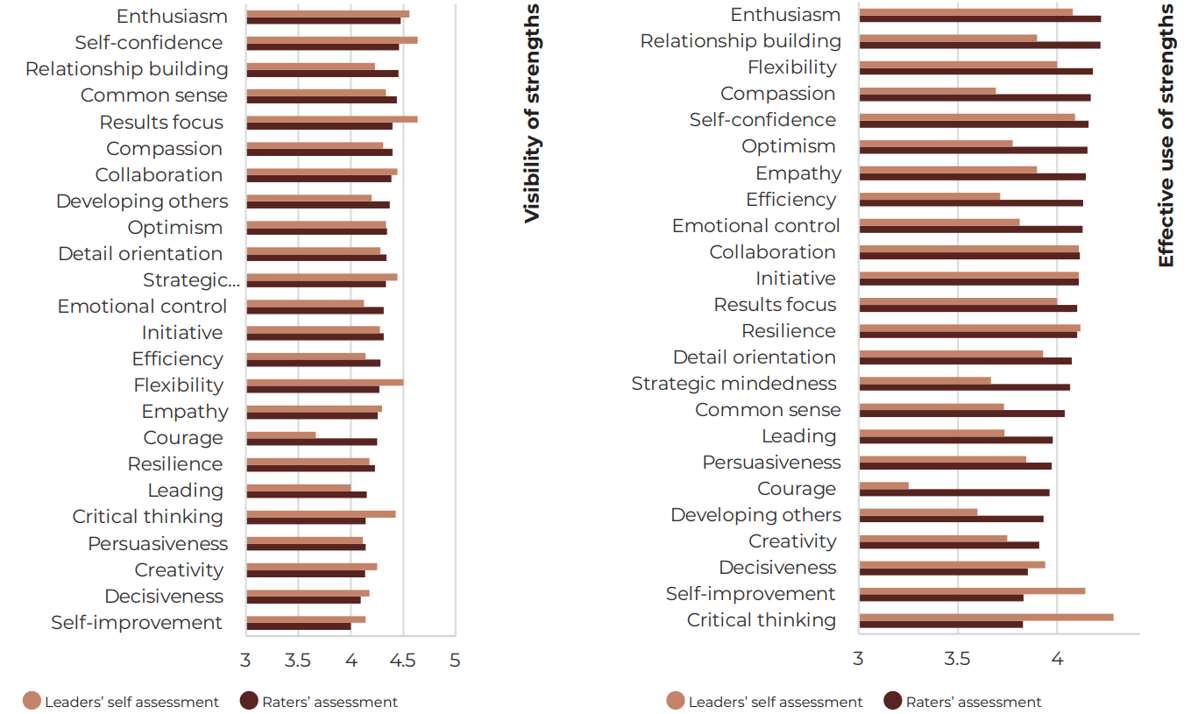
3. The Four Leadership Habits Ratings in the Sales Industry
The StrengthscopeLeader™ report looks at sixteen questions across four clusters of effective leadership habits. Leaders evaluate themselves on all sixteen questions and get scored by their nominated raters.
Strengthscope’s four clusters of leadership habits are:
- Sharing Vision: Setting a clear, shared vision of success for the organisation.
- Sparking Engagement: Empowering, inspiring and developing people.
- Skilfully Executing: Setting stretching performance expectations, reviewing progress and to ensure delivery of planned outcomes.
- Sustaining Progress: Recognising achievement and encouraging continuous improvement and experimentation.
This graph demonstrates overall where leaders rate themselves in these habits, versus where their stakeholders rate the leaders against the same habits.
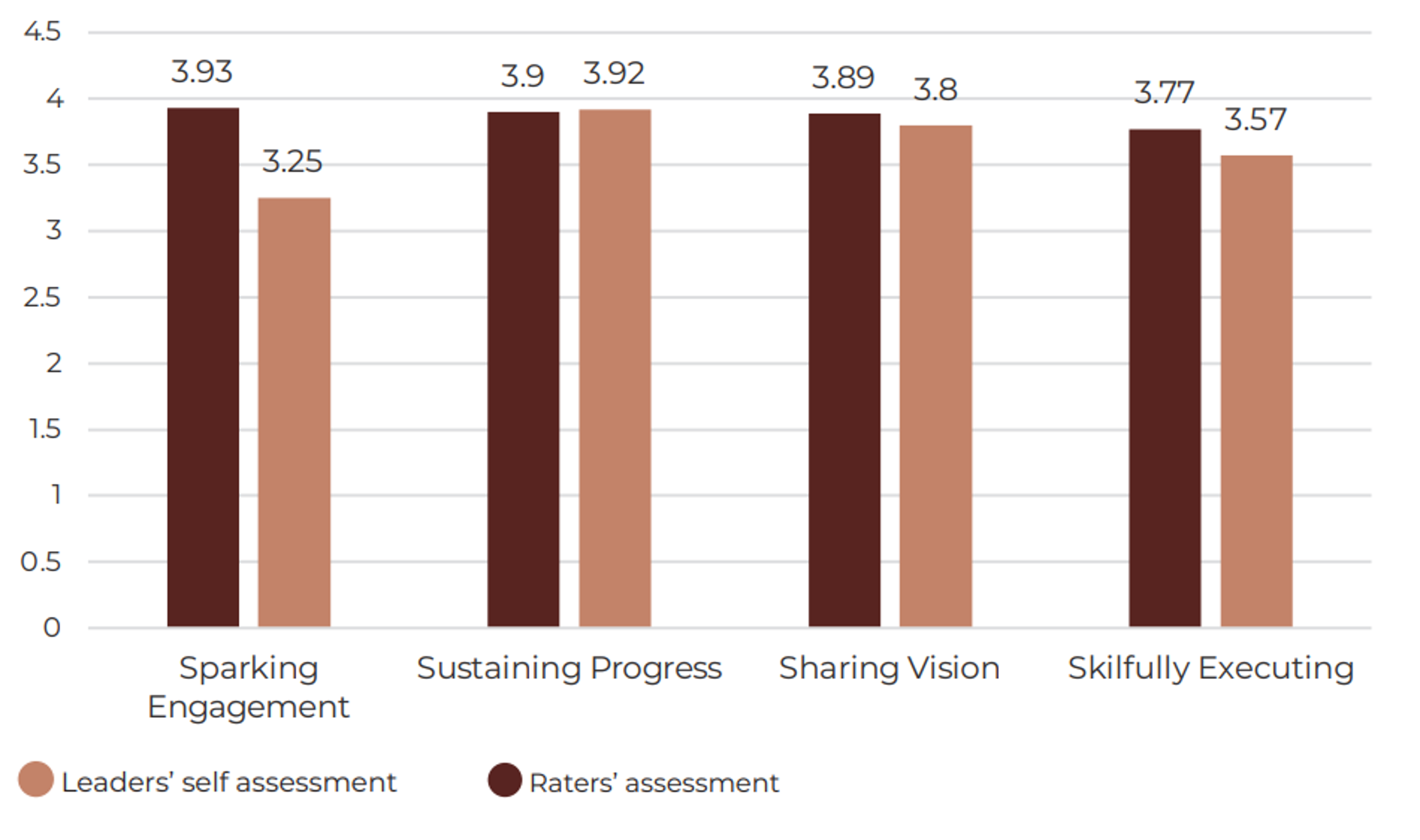
4. Breakdown of Leadership Habits Across Four Areas
Here we see the leaders’ self ratings, and their raters’ ratings, across the sixteen questions within the four leadership habits.
Overall, leaders in sales score lowest in eight of the 16 habits, including holding people accountable for delivering results, dealing decisively with poor performance, encouraging people to use their strengths and skills, promoting an open and respectful work environment where people can share their views and encouraging people to give each other constructive feedback. They also score lowest in creating a safe environment for risk-taking and encouraging people to stretch their capabilities to meet future needs. See the data from all the industries here.
